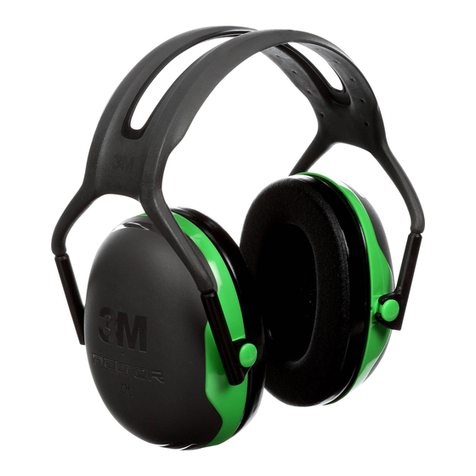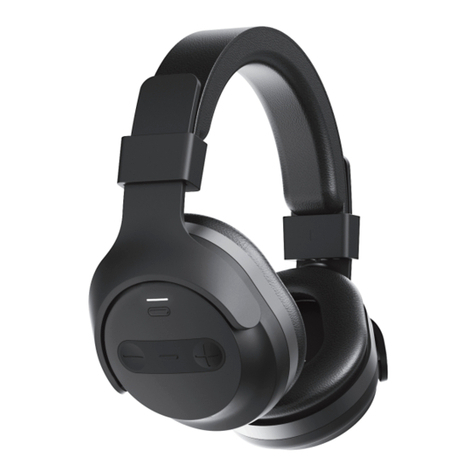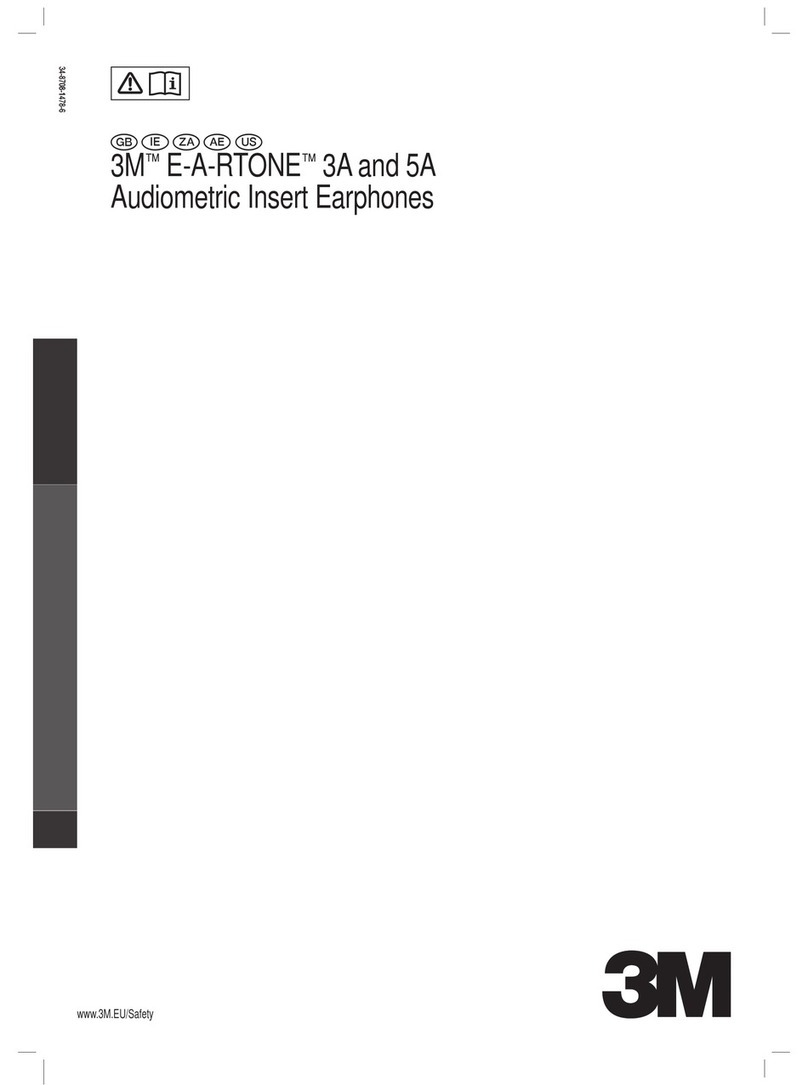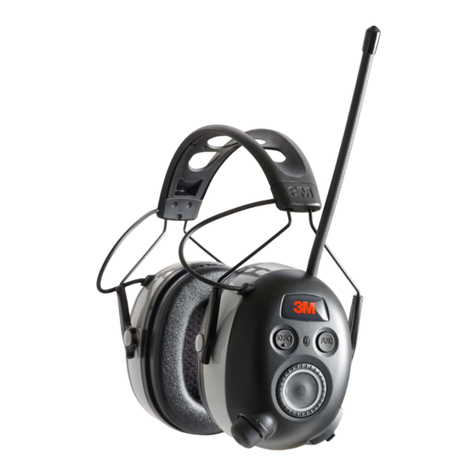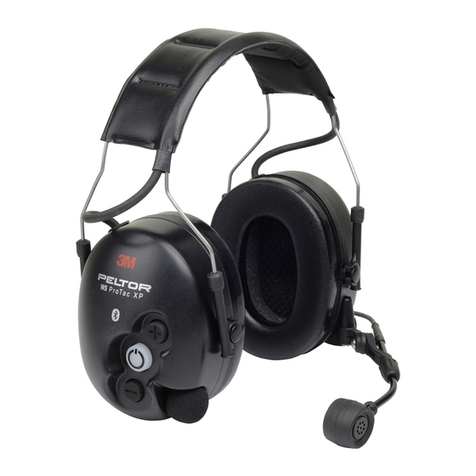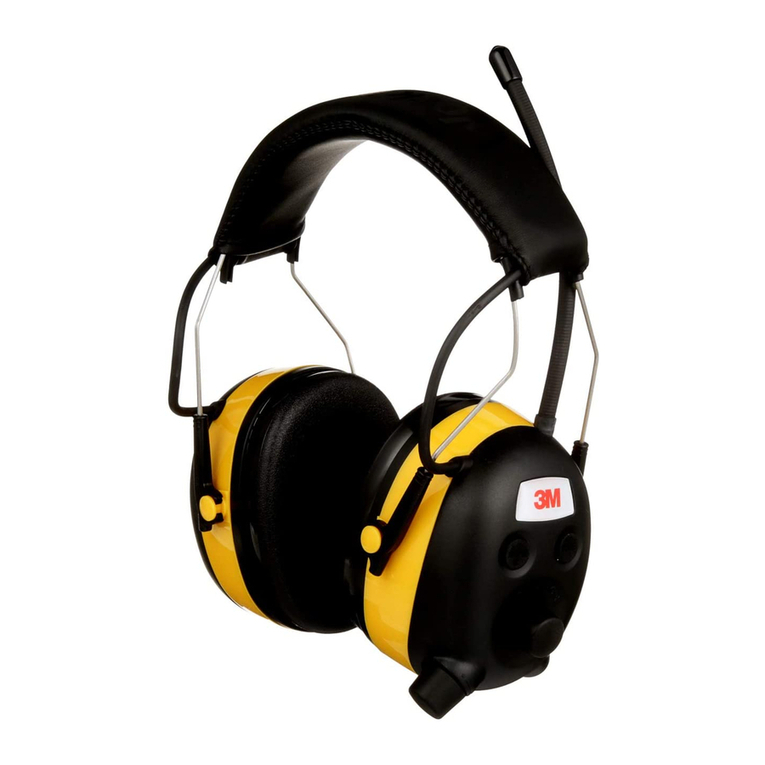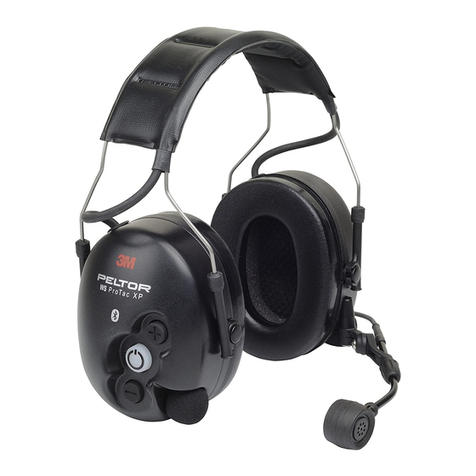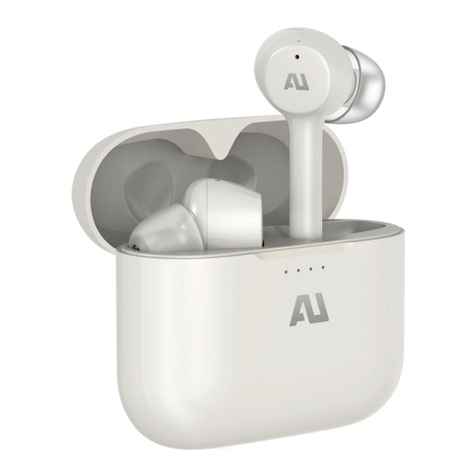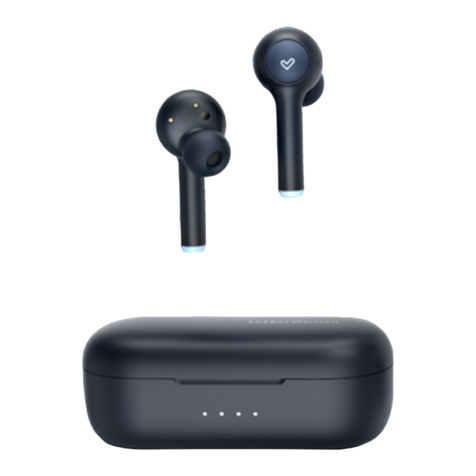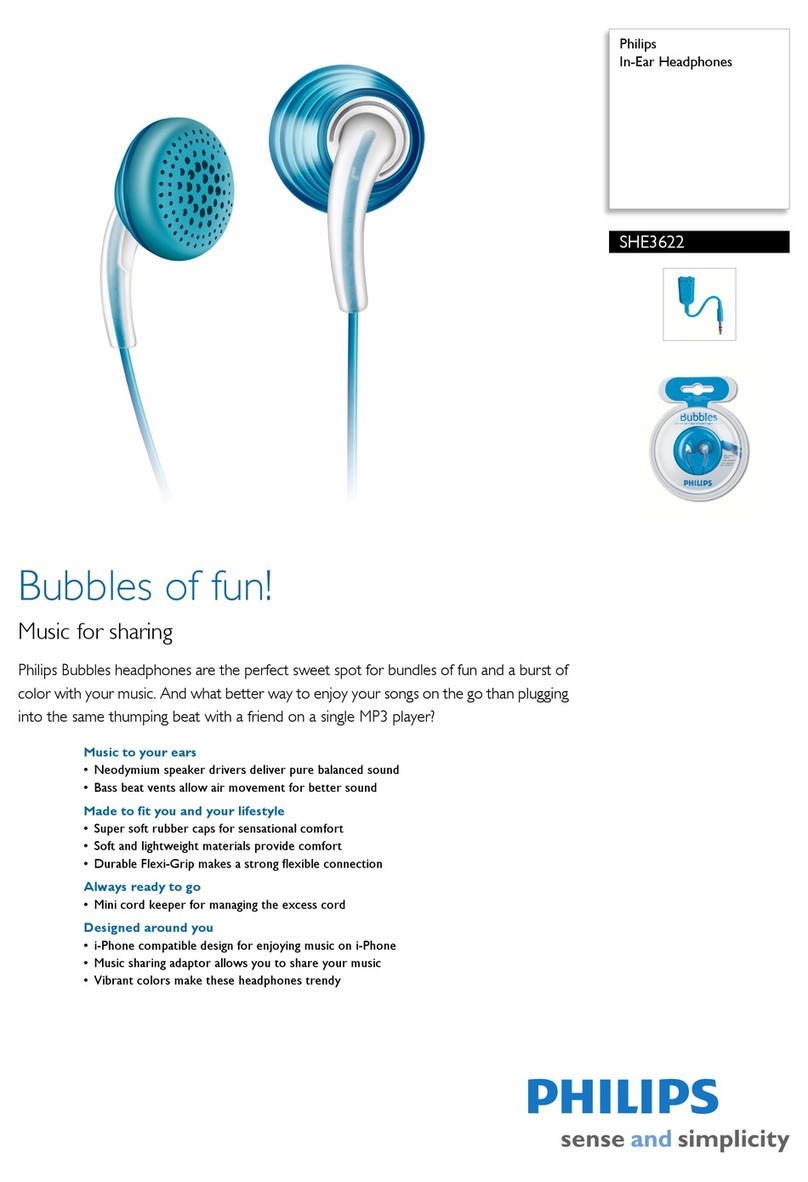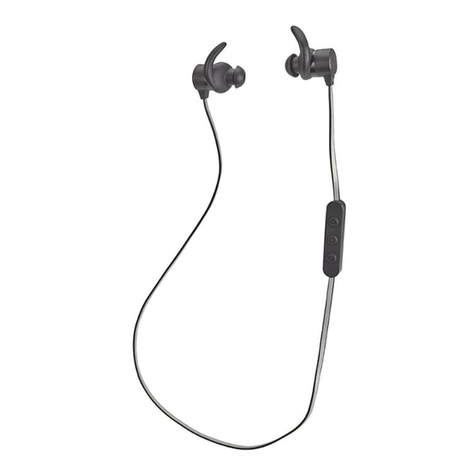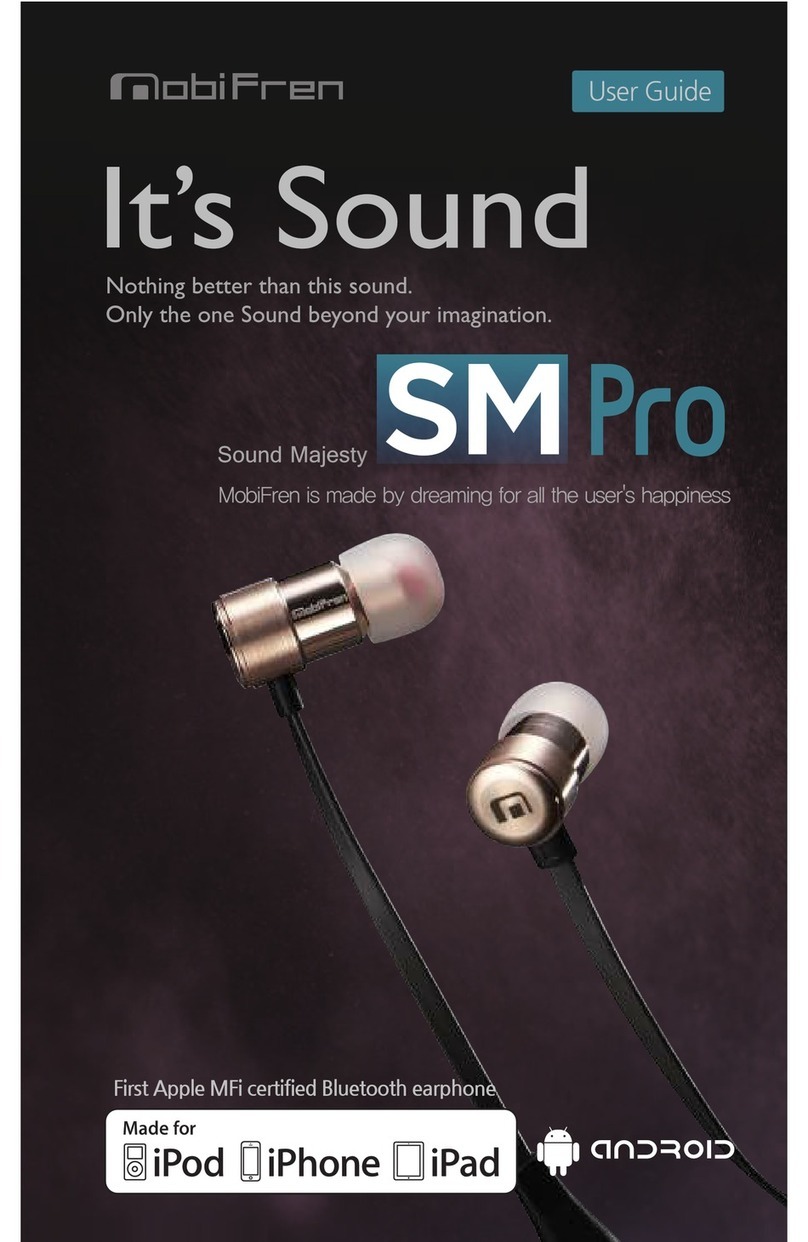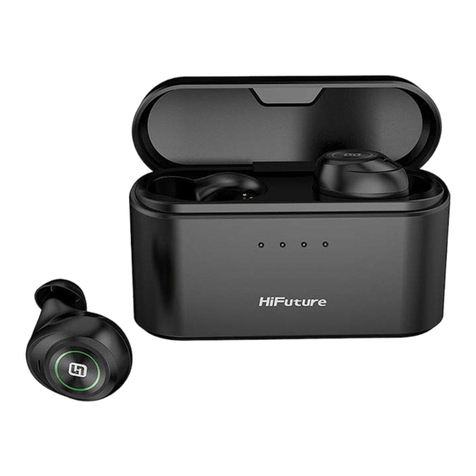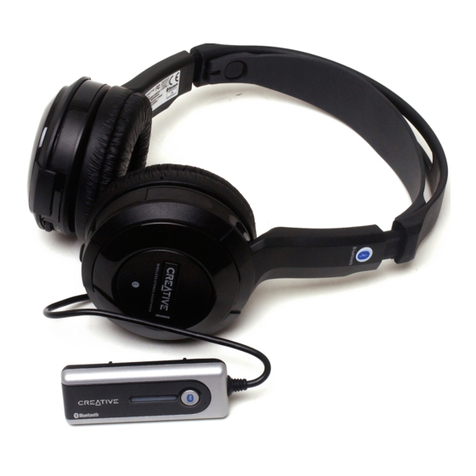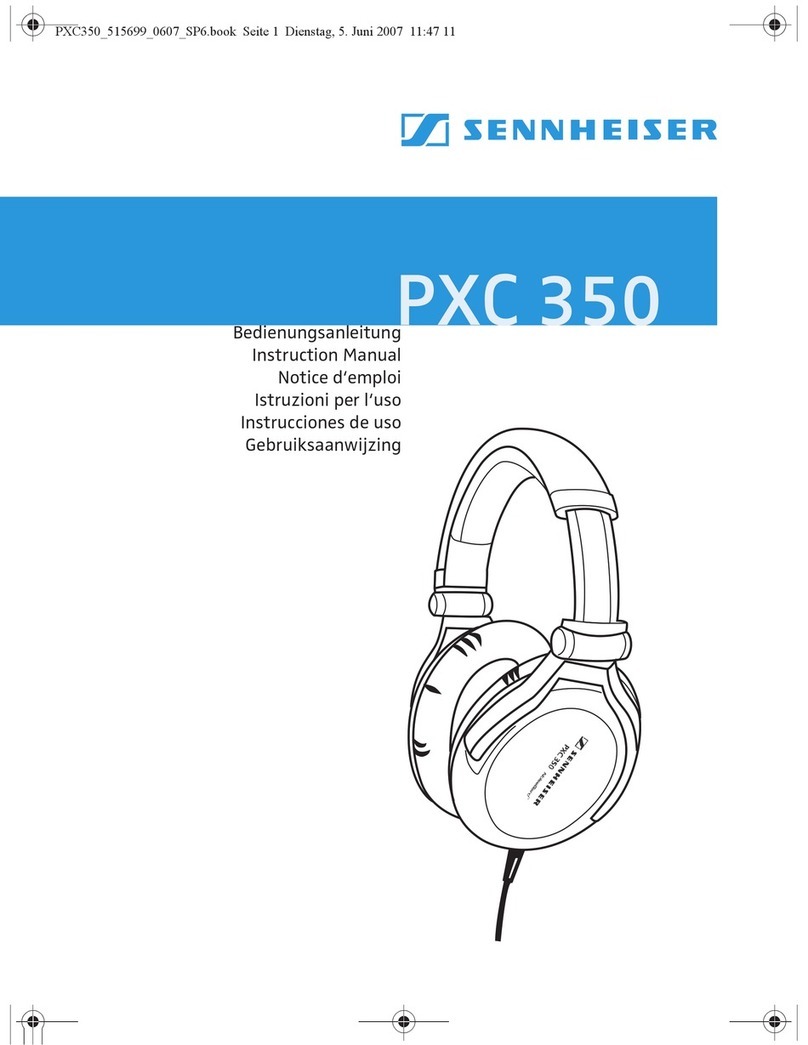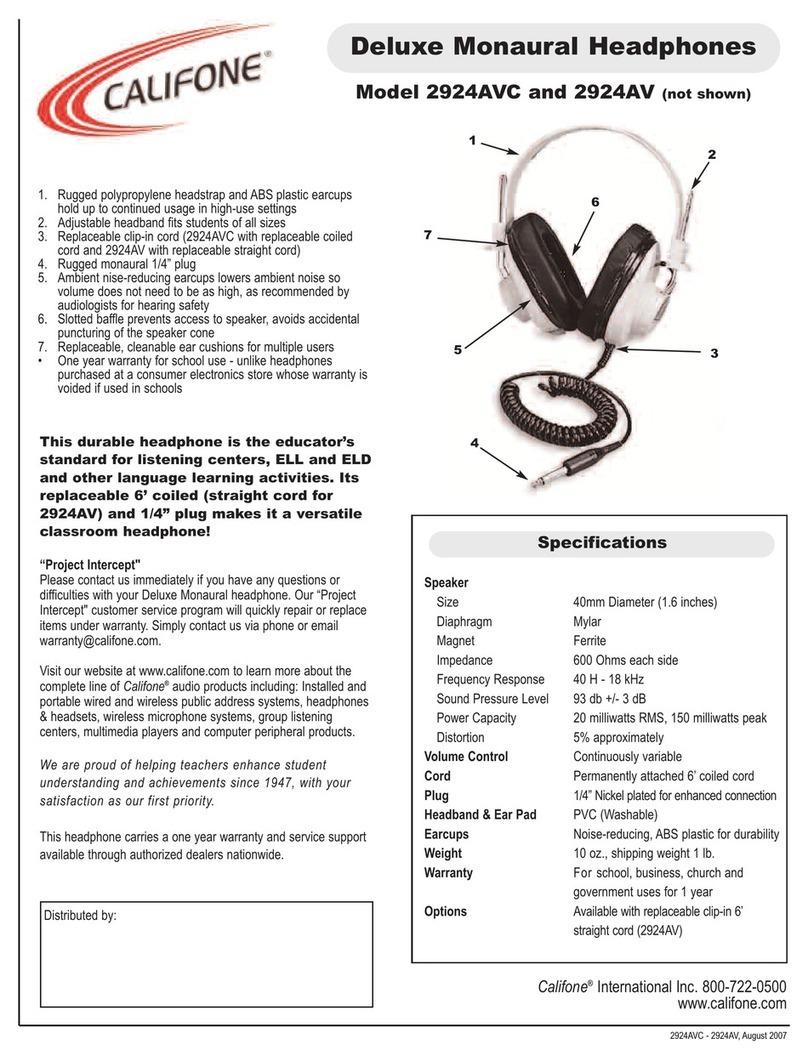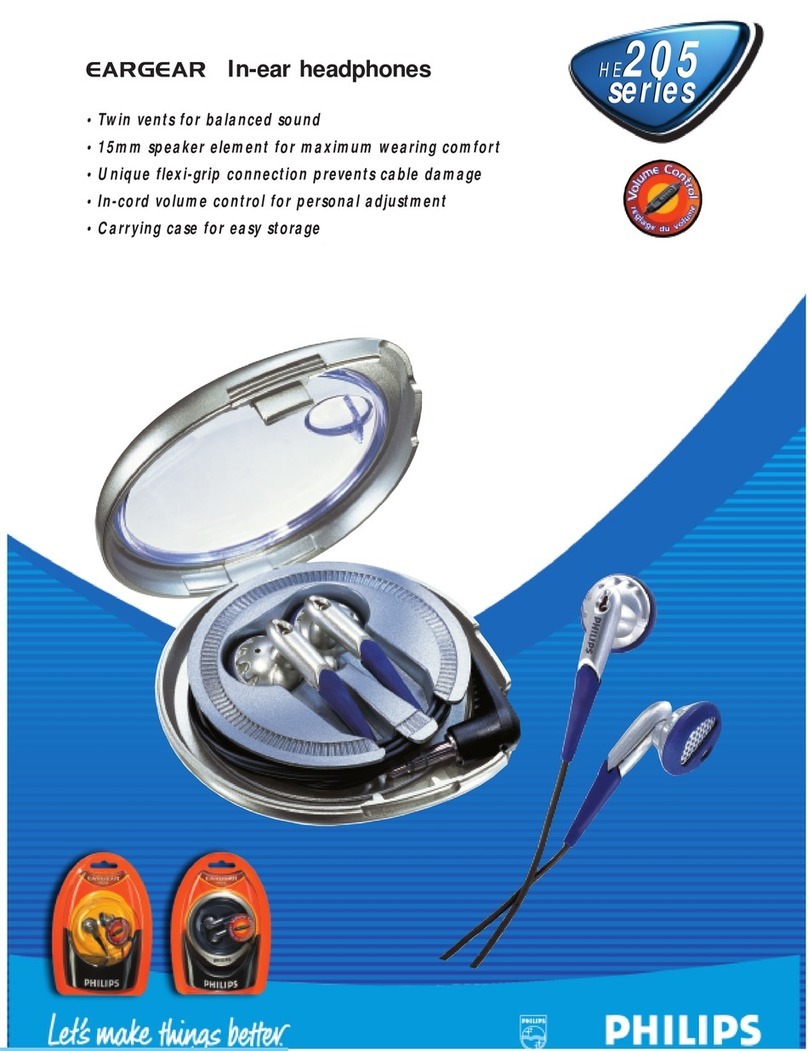
11
GB
3:6 Equalizer
The Equalizer adjusts the tone and has a choice of four
settings: Low, Neutral, High and Extra High.
3:7 Release Time (level-dependent function for ambient
sound)
The release time setting adjusts the time before the limiter for
the level-dependent function opens after activation. Available
settings are Normal and Slow.
3:8 External Input Mode (headset only)
The external input can be set to one of three modes. Try the
three levels until you nd the ideal one for your connected
device.
3:9 External Input Volume (headset only)
The volume of the external input can be set to normal or high.
WARNING! At the high setting the volume may exceed 82 dB.
4. IMPORTANT USER INFORMATION
It is recommended that the wearer ensures that:
• The ear-muffs are tted, adjusted and maintained in
accordance with the manufacturer’s instructions.
• The ear-muffs are worn at all times in noisy surroundings.
• The ear-muffs are regularly inspected for serviceability.
Warning!
If the recommendations above are not adhered to, the
protection afforded by the ear-muffs will be severely impaired.
• This product may be adversely affected by certain
chemical substances. Further information should be
sought from the manufacturer.
• Ear-muffs, and in particular cushions, may deteriorate
with use and should be examined at frequent intervals for
cracking and leakage, for example.
• The tting of hygiene covers to the cushions may affect
the acoustic performance of the ear-muffs.
• This ear-muff is provided with level-dependent attenuation.
The wearer should check correct operation before use.
If distortion or failure is detected, the wearer should
refer to the manufacturer’s advice for maintenance and
replacement of the battery.
• This ear-muff is provided with electrical audio input. The
wearer should check correct operation before use. If
distortion or failure is detected, the wearer should refer to
the manufacturer’s advice.
Follow the advice in this manual on maintaining and replacing
batteries.
Warning!
• Performance may deteriorate with battery usage. The
typical period of continuous use that can be expected from
the ear-muff battery is 1000 hours.
• The output of the level-dependent circuit of this hearing
protector may exceed the external sound level.
• The output of the electrical audio circuit of this hearing
protector may exceed the daily limit sound level.
5. MAINTENANCE
5:1 Replacing the ear cushions
(E:1) Slide your ngers under the edge of the ear cushion
and pull straight out.
(E:2) Insert the new foam and ear cushion.
(E:3) Press until it snaps into place.
5:2 Cleaning
Remove the ear cushions and attenuation cushions (g. E)
if you have been wearing the hearing protector for a long
time or if moisture has gathered inside the cups. Clean and
disinfect the cups, headband and ear cushions regularly with
soap and warm water. Make sure the soap is known not to
be harmful to the wearer. Allow the hearing protector to dry
before you use it again. Do not immerse the hearing protector
in water!
5:3 Use and Storage conditions
Remove the batteries before storing the product. Do not store
the hearing protector at temperatures above +55°C, (for
example on a dashboard, parcel shelf or window sill), or at
temperatures below –20°C. Do not use the hearing protector
at temperatures above +55°C, or below –20°C.
5:4 Microphone protection
To protect the speech microphone from humidity and dirt,
use microphone protector HYM1000. To attach the protector,
see g F.
5:5 WEEE (Waste Electrical and
Electronic Equipment) Symbol:
Below requirement applies in the European Union.
Do NOT dispose your product as unsorted municipal waste!
The crossed-out wheeled-bin symbol indicates that all
EEE (Electrical and Electronic Equipment), batteries and
accumulators must be disposed of according to local law by
the use of available return and collection systems.
6. TECHNICAL DATA
6:1 Standard and Approval
3M Svenska AB hereby declares that this 3M™ PELTOR™
Tactical XP Headset is in compliance with the essential
requirements and other provisions set out in the appropriate
directives. Thereby it fulls the requirements for CE marking.
A copy of the declaration of conformity and additional
information required in the directives can be obtained by
contacting 3M in the country of purchase. For contact
information, see last pages of this user instruction. The
product has been tested and approved in accordance with
EN 352-1:2002 / EN 352-3:2002, EN 352-4:2001,
EN 352-6:2002.
This product contains electrical and electronic components
and must not be disposed of using standard refuse collection.
Please consult local directives for disposal of electrical and
electronic equipment.
FP3739_Tactical_XP_rev b_8 sidigt omslag_A5.indd 11 2016-03-24 15:08:44

